
Clarence Leon Brown was an American film director.
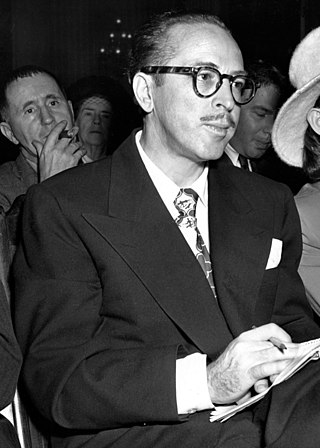
James Dalton Trumbo was an American screenwriter who scripted many award-winning films, including Roman Holiday (1953), Exodus, Spartacus, and Thirty Seconds Over Tokyo (1944). One of the Hollywood Ten, he refused to testify before the House Un-American Activities Committee (HUAC) in 1947 during the committee's investigation of alleged Communist influences in the motion picture industry.

Barbara Stanwyck was an American actress, model and dancer. A stage, film, and television star, during her 60-year professional career she was known for her strong, realistic screen presence and versatility. She was a favorite of directors, including Cecil B. DeMille, Fritz Lang, and Frank Capra, and made 85 films in 38 years before turning to television.

The Smiling Lieutenant is a 1931 American pre-Code musical comedy film directed by Ernst Lubitsch, starring Maurice Chevalier, Claudette Colbert and Miriam Hopkins, and released by Paramount Pictures.

Harold Clayton Lloyd Sr. was an American actor, comedian, and stunt performer who appeared in many silent comedy films.
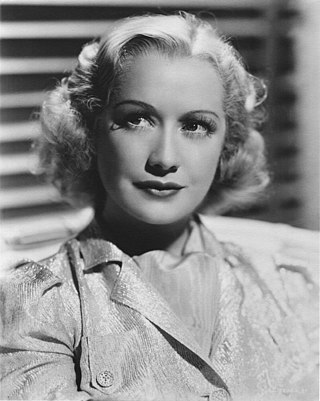
Ellen Miriam Hopkins was an American actress known for her versatility. She signed with Paramount Pictures in 1930.
Temple Drake is a fictional character created by William Faulkner. She appears in the novels Sanctuary (1931) and Requiem for a Nun (1951). The 1962 play Requiem for a Nun and the films The Story of Temple Drake (1933) and Sanctuary (1961) also feature the character. In the two films she is played, respectively, by Miriam Hopkins and Lee Remick.
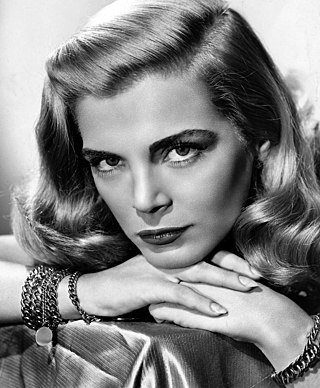
Lizabeth Virginia Scott was an American actress, singer and model for the Walter Thornton Model Agency, known for her "smoky voice" and being "the most beautiful face of film noir during the 1940s and 1950s". After understudying the role of Sabina in the original Broadway and Boston stage productions of The Skin of Our Teeth, she emerged in such films as The Strange Love of Martha Ivers (1946), Dead Reckoning (1947), Desert Fury (1947), and Too Late for Tears (1949). Of her 22 films, she was the leading lady in all but three. In addition to stage and radio, she appeared on television from the late 1940s to early 1970s.
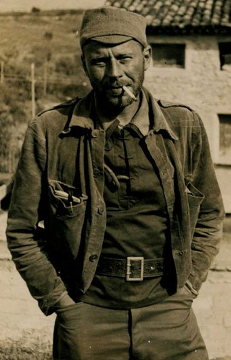
Alvah Cecil Bessie was an American novelist, journalist and screenwriter who was blacklisted by the movie studios for being one of the Hollywood Ten who refused to testify before the House Un-American Activities Committee. He was a member of the Communist Party USA and participated in paramilitary activity as part of the Comintern's International Brigades during the Spanish Civil War.

Virginia City is a 1940 American Western film directed by Michael Curtiz and starring Errol Flynn, Miriam Hopkins, Randolph Scott, and a mustachioed Humphrey Bogart in the role of the real-life outlaw John Murrell. Based on a screenplay by Robert Buckner, the film is about a Union officer who escapes from a Confederate prison and is sent to Virginia City from where his former prison commander is planning to send five million dollars in gold to Virginia to save the Confederacy. The film premiered in its namesake, Virginia City, Nevada. The film was shot in black and white (sepiatone).

Aileen Pringle was an American stage and film actress during the silent film era.
"It's Magic" is a popular song written by Jule Styne, with lyrics by Sammy Cahn, published in 1947. They wrote the song for Doris Day in her Warner Brothers film debut, Romance on the High Seas. In the autumn of 1948 Vic Damone, Tony Martin, Dick Haymes, Gordon MacRae and Sarah Vaughan all charted on Billboard magazine charts with versions of the song, but none as successfully as Day's recording. "It's Magic" received an Academy Award nomination for Best Song, but in March 1949 lost to "Buttons and Bows" by Jay Livingston and Ray Evans.

Molly Clark Haskell is an American film critic and author. She contributed to The Village Voice—first as a theatre critic, then as a movie reviewer—and from there moved on to New York magazine and Vogue. Her most influential book is From Reverence to Rape: The Treatment of Women in the Movies. She co-hosted Turner Classic Movies' The Essentials with Robert Osborne in 2006 for one season.
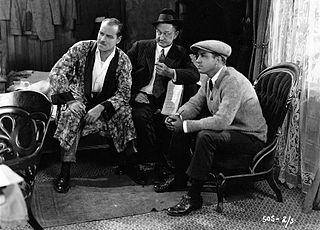
Charles Edgar Schoenbaum A. S. C. was an American cinematographer. His known film credits began in 1917—although he probably had earlier films—and ended with his untimely death from cancer in 1951 at age 57. He was nominated for an Academy Award in 1949 for his work on Little Women.

The Story of Temple Drake is a 1933 American pre-Code drama film directed by Stephen Roberts and starring Miriam Hopkins and Jack La Rue. It tells the story of Temple Drake, a reckless woman in the American South who falls into the hands of a brutal gangster and rapist. It was adapted from the highly controversial 1931 novel Sanctuary by William Faulkner. Though some of the more salacious elements of the source novel were not included, the film was still considered so indecent that it helped give rise to the strict enforcement of the Hays Code.
The Chevrolet Tele-Theatre is an American anthology series that aired live on NBC Mondays at 8 pm EST from September 27, 1948 to June 26, 1950. The program presented both news headlines and live dramatic performances of either original plays or works adapted for television from the stage. Sometimes the show was referred to as Chevrolet on Broadway or The Broadway Playhouse; particularly when the program was presenting an adapted stage work from New York City's theatre scene.
Chamberlain Brown was a theater impresario in the United States. He acted, produced Broadway plays, represented actors as a casting agent, published theatrical publications, and hosted radio shows about the theater with guest stars in each episode. His brother Lyman joined him in the business.

Margaret "Peg" McCray, also known as Peggy Thompson, Peggy or Peg Fenwick and Peg Padover, was an American screenwriter and playwright who worked in the U.S. and French film industries, best known for writing the scripts for Whirlpool of Desire and All That Heaven Allows.

Viva Tattersall (1898–1989) was the stage name of British stage and film actress, playwright and sculptor, Vera Tattersall, who settled in the United States.
Ritzy is a 1930 comedy play by Sidney Toler and Viva Tattersall. It ran for 32 performances at the Longacre Theatre on Broadway with a cast that included Miriam Hopkins and Ernest Truex. A financially struggling couple living in a cheap hotel believe they have inherited a huge sum of money, until the discovery of closer relatives means they will not receive the fortune.















